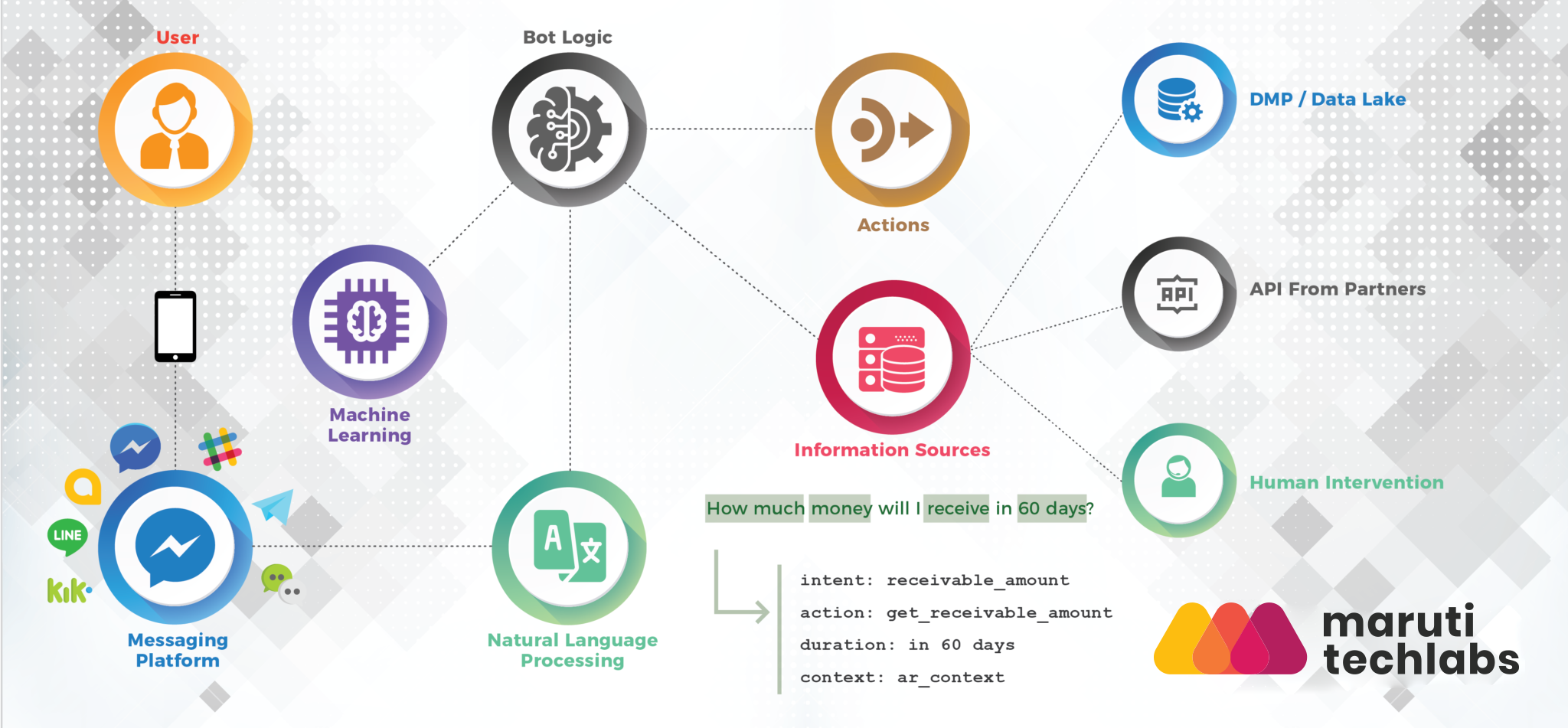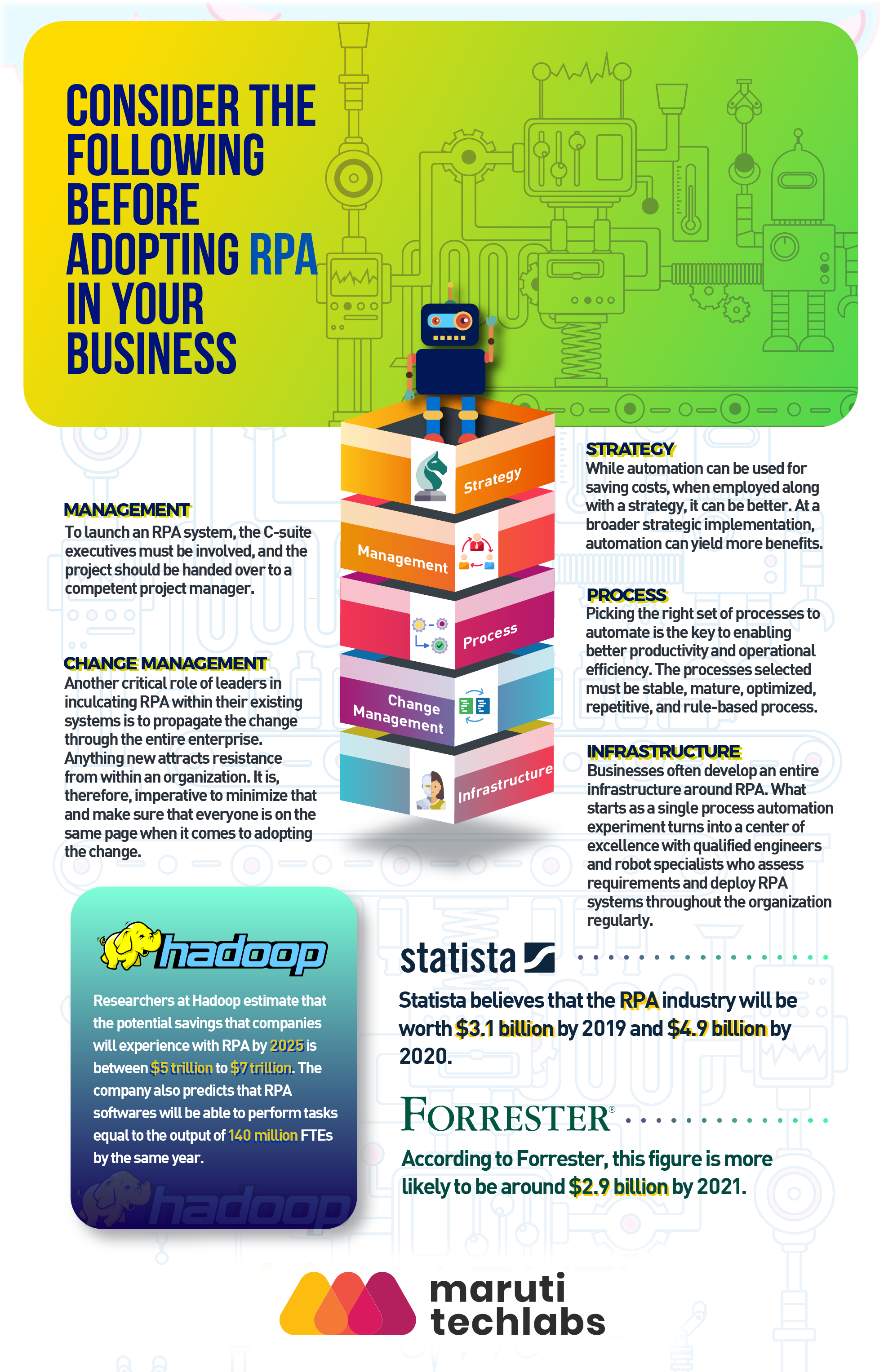

What is NLP? Why does your business need an NLP based chatbot?






With chatbots becoming more and more prevalent over the last couple years, they have gone on to serve multiple different use cases across industries in the form of scripted & linear conversations with a predetermined output. Although that has served the purpose with multiple use cases, today, with the advent of AI and Machine Learning, it has become imperative for businesses to develop and deploy an NLP based chatbot that assesses, analyzes and communicates with its users just like a human in order to offer an unparalleled experience.
Natural Language Processing is a based on deep learning that enables computers to acquire meaning from inputs given by users. In the context of bots, it assesses the intent of the input from the users and then creates responses based on contextual analysis similar to a human being.
Say you have a chatbot for customer support, it is very likely that users will try to ask questions that go beyond the bot’s scope and throw it off. This can be resolved by having default responses in place, however, it isn’t exactly possible to predict the kind of questions a user may ask or the manner in which they will be raised.
When it comes to Natural Language Processing, developers can train the bot on multiple interactions and conversations it will go through as well as providing multiple examples of content it will come in contact with as that tends to give it a much wider basis with which it can further assess and interpret queries more effectively.
So, while training the bot sounds like a very tedious process, the results are very much worth it. Royal Bank of Scotland uses NLP in their chatbots to enhance customer experience through text analysis to interpret the trends from the customer feedback in multiple forms like surveys, call center discussions, complaints or emails. It helps them identify the root cause of the customer’s dissatisfaction and help them improve their services according to that.
Best NLP Approach
The best approach towards NLP that is a blend of Machine Learning and Fundamental Meaning for maximizing the outcomes. Machine Learning only is at the core of many NLP platforms, however, the amalgamation of fundamental meaning and Machine Learning helps to make efficient NLP based chatbots. Machine Language is used to train the bots which leads it to continuous learning for natural language processing (NLP) and natural language generation (NLG). Both ML and FM has its own benefits and shortcomings as well. Best features of both the approaches are ideal for resolving the real-world business problems.
Here’s what an NLP based bot entails –

NLP engines extensively use Machine Learning to parse user input in order to take out the necessary entities and understand user intent. NLP based chatbots can parse multiple user intents to minimize the failures.
Intent Recognition –
User inputs through a chatbot are broken and compiled into a user intent through few words. For e.g., “search for a pizza corner in Seattle which offers deep dish margherita”.
NLP analyses complete sentence through the understanding of the meaning of the words, positioning, conjugation, plurality, and many other factors that human speech can have. Thus, it breaks down the complete sentence or a paragraph to a simpler one like – search for pizza to begin with followed by other search factors from the speech to better understand the intent of the user.
This attribute also facilitates NLP contract management and analysis.
Dealing with Entity –
Entities can be fields, data or words related to date, time, place, location, description, a synonym of a word, a person, an item, a number or anything that specifies an object. The chatbots are able to identify words from users, matches the available entities or collects additional entities of needed to complete a task.
Capitalization of Nouns –
NLP enabled chatbots remove capitalization from the common nouns and recognize the proper nouns from speech/user input.
Expansion & Transfer of vocabulary –
NLP enables bots to continuously add new synonyms and uses Machine Learning to expand chatbot vocabulary while also transfer vocabulary from one bot to the next.
Tense of the Verbs –
AI chatbots understand different tense and conjugation of the verbs through the tenses.
Contractions –
Bots with NLP can expand the contractions and simplify the tasks removing apostrophes in between the words.
Other than these, there are many capabilities that NLP enabled bots possesses, such as – document analysis, machine translations, distinguish contents and more.
NLP engines rely on the following elements in order to process queries –
There are many NLP engines available in the market right from Google’s Dialogflow (previously known as API.ai), Wit.ai, Watson Conversation Service, Lex and more. Some services provide an all in one solution while some focus on resolving one single issue.

At its core, the crux of natural language processing lies in understanding input and translating it into language that can be understood between computers. To extract intents, parameters and the main context from utterances and transform it into a piece of structured data while also calling APIs is the job of NLP engines.
There are many different types of chatbots created for various purposes like FAQ, customer service, virtual assistance and much more. Chatbots without NLP rely majorly on pre-fed static information & are naturally less equipped to handle human languages that have variations in emotions, intent, and sentiments to express each specific query.
Let’s check out the reasons that your chatbot should have NLP in it –
1.Overcoming the challenges of language variations –
The problem with the approach of pre-fed static content is that languages have an infinite number of variations in expressing a specific statement. There are uncountable ways a user can produce a statement to express an emotion. Researchers have worked long and hard to make the systems interpret the language of a human being.
Through Natural Language Processing implementation, it is possible to make a connection between the incoming text from a human being and the system-generated response. This response can be anything starting from a simple answer to a query, action based on customer request or store any information from the customer to the system database. NLP can differentiate between the different type of requests generated by a human being and thereby enhance customer experience substantially.
2.Shift in focus on more important tasks
Generally many different roles & resources are deployed in order to make an organization function, however, that entails repetition of manual tasks across different verticals like customer service, human resources, catalog management or invoice processing. NLP based chatbots reduce the human efforts in operations like customer service or invoice processing dramatically so that these operations require fewer resources with increased employee efficiency.
Now, employees can focus on mission critical tasks and tasks that impact the business positively in a far more creative manner as opposed to losing time on tedious repeated tasks every day. You can use NLP based chatbots for internal use as well especially for Human Resources and IT Helpdesk.
3.Increased profitability due to reduced cost
Costing is the essential aspect for any business to grow and increase profitability. NLP based chatbots can significantly assist in cutting down costs associated with manpower and other resources entangled in repetitive tasks as well as costs on customer retention, while improving efficiency and streamlining workflows.
4.Higher efficient systems lead to customer satisfaction
Millennials today want an instant response and instant solutions for their queries. NLP helps chatbots understand, analyze and prioritize the questions according to the complexity & this enables bots to respond to customer queries faster than a human being. Faster responses help in building customer trust and subsequently, more business.
You’ll experience an increased customer retention rate after using chatbots. It reduces the effort and cost of acquiring a new customer each time by increasing loyalty of the existing ones. Chatbots give the customers the time and attention they want to make them feel important and happy.
5.Market Research and Analysis for making impactful business decisions
You can get or generate a considerable amount of versatile and unstructured content just from social media. NLP helps in structuring the unstructured content and draw meaning from it. You can easily understand the meaning or idea behind the customer reviews, inputs, comments or queries. You can get a glimpse at how the user is feeling about your services or your brand.

NLP based chatbots can help enhance your business processes and elevate customer experience to the next level while also increasing overall growth and profitability. It provides technological advantages to stay competitive in the market-saving time, effort and costs that further leads to increased customer satisfaction and increased engagements in your business.
Although NLP, NLU and NLG isn’t exactly at par with human language comprehension, given its subtleties and contextual reliance; an intelligent chatbot can imitate that level of understanding and analysis fairly well. Within semi restricted contexts, a bot can execute quite well when it comes to assessing the user’s objective & accomplish required tasks in the form of a self-service interaction.
At the end of the day, with NLP based chatbots, the result is significant when it comes to cutting down on operational costs for customer support through immediate responses with zero down time, round the clock and consistent execution from an “employee” that is new for an extremely short time frame and already well-versed in multiple languages.


